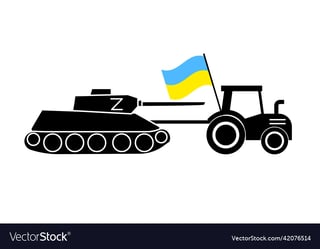Tactics vs. Tech
It has been said that the US could gift a supercarrier to any other country, but it would take them a decade or more to actually make it combat-ready. This is not for lack of fuel or munitions, but simply due to experience. Operating an aircraft carrier is a complex choreography rivalling the finest ballets. China has purchased 2 aircraft carriers themselves and built a third from scratch. And yet we do not see them projecting these carrier groups throughout the world's oceans. Clearly, they are going through this process of learning the operations, which Americans have been practicing since the 1940s (so almost 80 years).
In Ukraine, both sides started out with nearly the same armaments. If anything, RU started out with several technically superior models, and probably more of the advanced models than UA (T-80M vs. T-72, Ka-52 vs. Mi-11, etc.). However, a year of fighting has produced dramatically different results, with the "superior tech" side getting beat down viciously. We can argue about the contribution of morale, but there should be no dispute that one of the major advantages UA has enjoyed is superior training and tactics.
Responsibility
At this point, the Ukrainian army, at all levels, has proven that it can and will fight smarter than the Russians. Even when outgunned 5:1 or worse, they have held their ground, inflicted outsized losses, and protected the most advanced assets given to them by allies. Although RU has claimed to have destroyed more than 2x more HIMARs and M-270 than have actually been given to UA, there are no public admissions that a single HIMARs system has been lost, and plenty of reason to believe that they have not. On the other hand, numerous inflatable HIMARs-shaped balloons have, quite tragically, been obliterated with RU rockets.
Although UA has also lost tanks to capture, many of their armor stock at the start of the war was not exactly maintained in fresh-off-the-line condition, and in many cases was overmatched by RU armor. On the other hand, I have not seen any widespread reports of captured donated IFVs, APCs, MRAPs and armored cars circulating on RU telegram channels. This suggests that UA is mindful of how it protects its most valuable hardware and does not expend it in high-risk, low reward zones.
Offense vs. Defense
For months, UA has complained that they cannot launch a counteroffensive because they lack the armor to do so. Clearly, they have tanks, but most are being used defensively all along the 1500+ km lines. And as the lines ebb and flow, it is not surprising that some tanks would be lost to capture when a position gets overrun. On the other hand, it does not take a MacArthur level strategist to see that UA is not going to set their platoon of Challenger 2s on a static position to fire defensively at human wave tactics. The best use of advanced armor is obviously to go on the offensive, and this is where the tanks will be least vulnerable to capture, assuming UA can maintain forward momentum. That is not to say that the tanks will be invulnerable or won't get hit. Rather, even if a tank gets disabled or destroyed, it won't get captured if the enemy can't hold the ground long enough to get to it. When UA has gone on the offensive, they have largely succeeded, and captured huge swaths of territory in doing so.
Although the West has collectively promised more than 100+ tanks, it seems likely that many fewer than this will be available in the first wave of deployments. The only logical use for a few platoons of your best tanks is as the tip of the spear on an offensive push. By now, Western analysts have surely determined that UA can successfully make such a push and hold the territory it gains. But hey, don't take Western intelligences' word for it...just ask the Russians in Crimea, who are leaving in droves. Nobody is ordering them out. They are just voting on their confidence in the RU army with their feet.
Conclusion
As others have noted, technology is leaky. It is pretty much impossible to control every export instance of your weapons, even if they are watered down. RU probably gets more tech through hacking than via captured equipment. RU has probably seen more Abrams in America via spying than anywhere else. I would be very surprised if they don't already know the secret sauce. But the reason RU doesn't deploy comparable tanks isn't because it lacks the technology...it's because it lacks the industry and manufacturing capability. The T-14 Armata is already nearly a decade old design, and RU reportedly only has 6 of them, mostly used for parade purposes. It would almost certainly be comparable in capability to modern Western tanks, if only RU could build it in numbers to be relevant.

